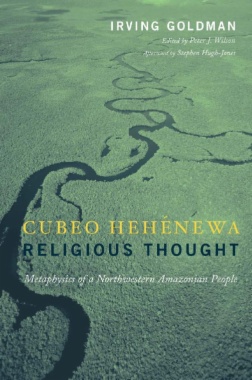The societies of the Vaupés region are now among the most documented indigenous cultures of the New World, in part because they are thought to resemble earlier civilizations lost during initial colonial conflict. Here at last is the eagerly awaited publication of a posthumous work by the man widely regarded as the preeminent authority on Vaupés Amazonian societies. Cubeo Hehénewa Religious Thought will be the definitive account of the religious worldview of a significant Amazonian culture. Cubeo religious thought incorporates ideas about the nature of the cosmos, society, and human life; the individual's orientation to the world; the use of hallucinogenic substances; and a New World metaphysics. This volume was substantially completed before Irving Goldman's death, but Peter Wilson has edited it for publication, providing a thorough introduction to Goldman's work. Stephen Hugh-Jones has contributed an afterword, setting the work in the context of contemporary Vaupés ethnography.

